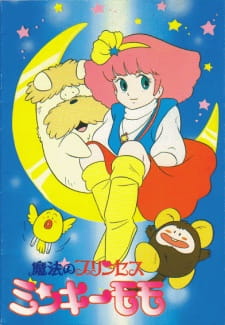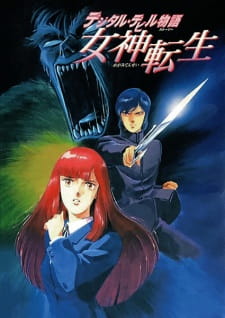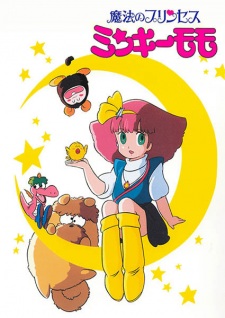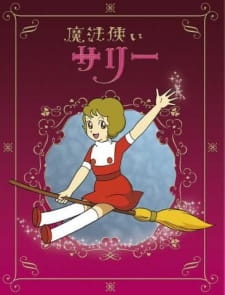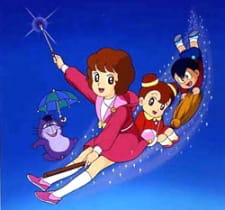Dec 13, 2019
Mahō Princess Minky Momo: Yume no Naka no Rondo is my first introduction into the expansive world of Minky Momo. For years, Production Reed’s Minky Momo (1982) duked it out against Studio Pierrot’s rival mahō shōjo series, Creamy Mami (1983). The original series for Minky Momo was sixty-three episodes and later, got reimagined as Mahō no Princess Minky Momo: Yume wo Dakishimete (1991)—leaving a legacy of magical girl hijinks for fans of the series to enjoy!
This review contains spoilers for Mahō Princess Minky Momo: Yume no Naka no Rondo (1985)! You have been warned!
—Story/Characters
The story begins with Momo’s parents suddenly winning tickets to visit the
...
South Pole, so they leave Momo to to watch the house, that doubles as a veterinary clinic, while they go on vacation. Momo realizes that she’s useless at menial labor, finds out that her parents’ airplane has gone missing, and then decides to get into her magical girl helicopter to go find her mother and father. She finds out that they have been spirited away from their passenger flight, near a mysterious island that seems to be uninhibited.
When she arrives at the island she runs into some conspicuous figures, including: Arsène Lupin and his son, members of the Italian mafia, and a spoof of James Bond. Soon after, everyone discovers that an aboriginal-run vacation resort is on the uninhibited island, where the natives charge a ridiculous amount of money for foreign spies to explore their land.
NOTE: There are some funny visual gags, like a group of polar bears doing radio calisthenics on an iceberg.
This is where things get really weird: it is revealed that the Bermuda Triangle is actually *Neverland and Peter Pan uses talking dragons to spray the island explorers with a manufactured, chemical gas that turns adults *into children forever, and then abducts them, so that they can always be innocent. An additional reveal is that the Pied Piper of Hamelin from folklore is actually none other than another incarnation of Peter Pan!
*In this film, Neverland is a giant, magical orb in the sky. There’s actually an Arsène Lupin tale, La Demoiselle aux yeux verts, where Lupin discovers The Fountain of Youth.
In the search for her parents, it turns out that Peter Pan is intentionally letting Momo’s mother and father remain adults, so that they can be the parents to the children of Neverland. Peter Pan offers Momo to stay as well, but she feels apprehensive about never being able to grow up—despite being a child herself.
NOTE: In the scene on the balcony, when Peter Pan explains the futility of growing up—there was some excellent body language. Momo looks at him melancholically and he responds with an impetuous smirk, like he doesn’t understand her distress and then she just looks at him blankly. The end of this scene really establishes the lack of understanding between their two ideals.
Even though all of the spies have lost all of their inhibition as small children, they are bugged with microscopic cameras, revealing the truth about Neverland to foreign embassies and so, the greedy embassies send armies out to steal the secrets of immortality from Neverland, so that they can make deathless soldiers.
Neverland gets nuked by fighter jets and Momo concocts the idea to use the gas to turn the enemy soldiers into children, so they lose their will to fight. So, the residents of Neverland and Momo’s parents spread the gas around and they eventually beat their attackers. In the end, Peter Pan decides to leave the island since his secret location has been discovered and flies with his dragons through space.
From that description, you can probably gather that it was a pretty weird movie. I personally thought the accolades for Yume no Naka no Rondo is more deserving on behalf of the visual presentation, rather than the story. The story felt as though the writers cobbled way too many ideas together to fit in a feature film. I don’t know their role in the television series but the king and queen of Fenarinarsa were useless, despite having magical powers. Apparently, their magic is not even strong enough to fix a broken television set.
The dinosaur girl, Lei, was really awesome… her army of Tyrannosauruses flipping over military tanks and the pterodactyls taking down fighter jets were among the best scenes of the film! I haven’t seen the TV show yet, so I don’t know, but the movie acted as if Lei was a reoccurring character—based on her and Momo’s familiarity.
NOTE: Momo also hijacks a jet and destroys the island’s resort… I have questions about how an elementary schooler knows how to pilot a fighter jet. Also, there are some pretty solid references to Stanley Kubrick’s Dr. Strangelove in this film!
The weakest part of Yume no Naka no Rondo are the moments when the pacing seems to drag, like in the scenes with Momo exploring Neverland and her conversations with Peter Pan. I’m sure that their dialogues were only boring to me because I am VERY familiar with the character of Peter Pan—I’m sure that the long explanation of his existence was meant for small children.
—Technical
The visuals in this film were very reminiscent of Ghibli’s work in Porco Rosso (1992)—it makes me wonder if Hayao Miyazaki took inspiration from this movie. Many of the character designs have a Akira Toriyama ‘cartoon realism’ type of visual aesthetic. The main director on this series was Hiroshi Watanabe, notably the director of Majutsushi Orphen, Ō Dorobō Jing, and Yume de Aetera. All of his other series have similar pacing issues but are beautiful to look at. The other director was the chief director of the Minky Momo TV series, Kunihiko Yuyama; he is most famous for his work on *Pokémon, Genmu Senki Leda, and Windaria.
*Kunihiko Yuyuma has directed nearly every Pokémon series and movie to date.
The only seiyū credited on the film is Momo’s actress: Mami Koyama. Her other roles include:
• Balalaika—Black Lagoon
• Vermouth—Detective Conan
• Arale Norimaki—Dr. Slump
• Lunch—Dragon Ball
• Jessica Edwards—Ginga Eiyū Densetsu
• Kycilia Zabi—Mobile Suit Gundam
• Fukiko Ichinomiya—Oniisama e...
• Shaina Ophiuchus—Saint Seiya
• Chiyoko Fujiwara—Millennium Actress
• Ryōko Mendō—Urusei Yatsura
NOTE: It’s kind of weird that she once voiced one of the most serendipitous little girls in anime but, other than that, she is mainly type-cast as evil women.
Overall, while the film did have its points of contention, it did make me want to watch the television series to find out more about Momo and and her entourage. I mean, how many girls, in the existing mahō shōjo series, actually own a magical helicopter? I would recommend this film to those who are fans of other classic magical girl series, like Cutey Honey (1973), and rate this film a 6/10 for its sense of childish wonder!
Reviewer’s Rating: 6
What did you think of this review?
Nice
 0
0
Love it
 0
0
Funny
 0
0
Confusing
 0
0
Well-written
 0
0
Creative
 0
0Show all
